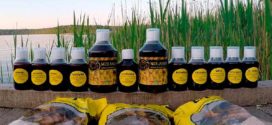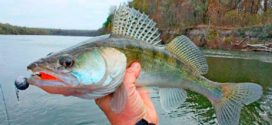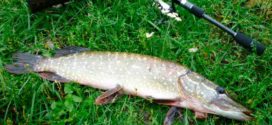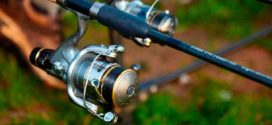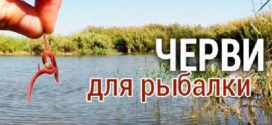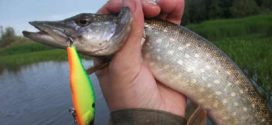Every fisherman needs to know what spawning is in fish, and when it happens, because it largely depends on whether the bite will be good, which means whether fishing will be successful in general.
Fishing during the spawning period is prohibited in our country, and restrictions apply even to amateur fishing. Therefore, it is better to familiarize yourself in advance with the timing of its passage at potential prey, so as not to fall under the penalties of the fishery supervision.
Fish spawning is the period of its reproduction, due to the emergence of favorable conditions for this species, characterized by the female throwing eggs into the water and fertilizing it with the milk of the male. Each species spawns in its own way, depending on the temperature of the water, its quality and composition.
Most of all, the reproduction process is influenced by temperature, sometimes its influence can be so strong that with a sharp cold snap, fertilization may not occur at all. The period when the fish goes to spawn is seasonal and is closely related to a certain time of the year. The breeding process and sexual behavior of fish are influenced by certain places, which fishermen call spawning grounds. For example, pike, bream or carp need grassy shallow waters or floodplains, asp or chub need a fast flow of water, and burbot and minnows will need a simple rocky or sandy bottom.
Content
Age and breeding season of fish
Sexual maturation of fish lasts for a different time, and females reach sexual maturity at different ages. For example, the beluga will be able to breed only after reaching the age of 15, however, there are also species that begin to spawn the very next year after birth. For most freshwater fish, spawning for the first time occurs only after reaching 3 years of age. As a rule, during this period, some species become more brightly colored, while others have additional elements of marriage clothing, such as spikes or growths.
The spawning period begins approximately in the middle of spring and continues until the summer season, and at the beginning of the cycle, sexually mature individuals develop a brutal appetite, which is called zhor in the language of anglers. During this period, males and females, who have strayed into a flock and completely lost control of themselves, swallow everything in a row, including various fishing nozzles, especially preferring earthworms and maggots.
In early spring, somewhere from mid-April to the end, pike begins to spawn. Behind it, with a certain margin, approximately from the middle to the end of May, ide and perch spawn. After them, pike perch, bream and roach go to spawn and continue it throughout June. Carp, crucian carp, tench and silver bream, as well as most other river and lake freshwater fish, begin to breed in late spring and early summer.
Salmon type trout and other fish breed already at the end of autumn, right up to the beginning of winter. And the spawning calendar is completed by burbot and some other species, for example, vendace, which manage to lay eggs under the ice, in the coldest time of the year during frosts. Burbots huddled in a flock swim against the current until they reach fast and shallow rifts, where they begin to throw a large amount of very small and sticky caviar into the water.
A sufficiently large female burbot can lay up to 1 million eggs, while a small young individual lays up to 200 thousand eggs. time.
Features of reproduction of cyprinids
Spawning in cyprinids is much more interesting than in most fish. Firstly, the process of reproduction of this species takes much longer in comparison with other freshwater species inhabiting the European territory of Russia. Secondly, carp spawn in 3 stages, each for about 10 days.
In addition, during the mating season, carp have peculiar growths on their scales, with which the fish rub against each other before mating. Fishermen call this process a “grater”. Friction against each other contributes to the rapid release of caviar in the female and milk in the male.
In addition to these features, there are also the following differences in the behavior of carps during the mating season:
- Most carps prefer to spawn in shallow water, but some of them, for example, carp, choose the riverbed for spawning.
- There is a certain system of passing through the stages of reproduction. First, young animals go on the mating path, followed by medium-sized fish for spawning, and only then the largest and most mature individuals begin to fertilize, and the process occurs only at dawn.
- Caviar is thrown out by females not all at once, but in portions, in 2 or 3 stages, most of the caviar comes out in the first portion. The number of eggs depends on the age of the female, but mature individuals are the most prolific, releasing the more eggs the older they are. In such fish, the number of eggs can reach a million.
- During mating, there are at least 2 males per 1 female. This is due to the peculiarities of the structure of carp caviar, which differs significantly from caviar of other fish, such as salmon. For several salmon females, there may be only 1 male, since it is enough to fertilize the entire caviar, which in these fish has a porous shell that swells in water with many holes. In carp yolks, the eggs are covered with sticky mucus, so a lot of milk is needed for fertilization.
- The most active males and females behave when the temperature reaches +20°C, although the first signs of activity are already observed when the water is heated to +15°C.
- After the breeding process is completed, the fish become lethargic, move little, eat almost nothing and feel unwell for about 2 weeks. During this period, catching carp does not make sense.
It is interesting that in this species of fish there are barren individuals with a shortened body, and there are also hermaphrodites, supplied with both milk and caviar. Barren fish are considered the most delicious, as Aristotle mentioned in his writings - they have the fattest meat.
Fish belonging to the carp family acquire spawning growths on the scales during this mating season.
Hello, I am Alexander, the mastermind behind the blog.
In terms of career and free time, I connected my life with the forest. How else, when you live in Karelia! In this blog, I am responsible for the hunting, hiking and equipment sections. Welcome to my world!
 Survival Lessons Tips for the survivalist, fisherman and hunter
Survival Lessons Tips for the survivalist, fisherman and hunter
